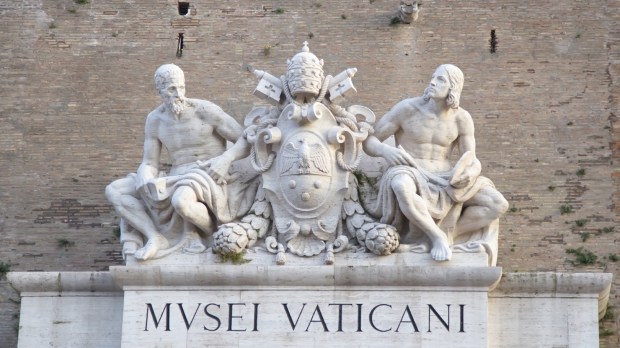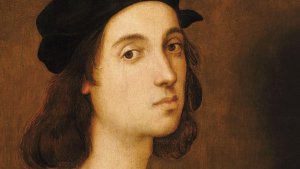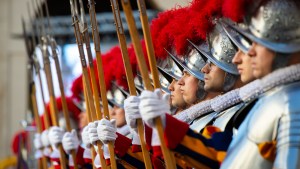Lenten Campaign 2025
This content is free of charge, as are all our articles.
Support us with a donation that is tax-deductible and enable us to continue to reach millions of readers.
Last Thursday, September 21 (a few months after the completion of the restoration of the Hall of the Liberal Arts in the famed Borgia Apartment), the Vatican Museums dedicated a session of Il Giovedì dei Musei (a cultural meeting that takes place every Thursday in the museums) to explaining the complex, painstaking process of recovering the wall decorations the Renaissance master Pinturicchio made between 1492 and 1494 in said hall.
The room, which used to be the study of Pope Alexander VI Borgia (1492-1503), is known as “Hall of the Liberal Arts” in reference to the disciplines that formed the basis of medieval scholastic teaching. All the wall decorations in the hall refer to these arts: they are allegorically represented, depicted as women seated on thrones. Prominent among them is Rhetoric, which bears the inscription “Pinturicchio” – the only signature of the artist found in the entire pictorial cycle.
Supported by the Patrons of the Arts in the Vatican Museums (PAVM), the restoration of the Hall is part of the larger conservation project of the paintings of the Borgia Apartment. The project began back in 2002, under the guidance of Francesca Persegati (the head restorer of the Vatican Museums) and the scientific counseling of the Department of 15th-16th-Century Art.
The conference explained not only the historical events that led to the various changes of use of the rooms but, above all, “the uniqueness of the technique employed by Pinturicchio in these numerous, rich decorations.”
The “Little Painter”
Pinturicchio, born Bernardino di Betto di Biagio, was an Italian Renaissance painter known for his contributions to the art world during the late 15th and early 16th centuries. He was born around 1454 in Perugia, Italy, and his nickname, “Pinturicchio,” translates to “little painter,” reflecting his small stature.
Pinturicchio’s artistic career flourished under the patronage of Pope Alexander VI, for whom he painted the famous frescoes in the Borgia Apartments of the Vatican that have just now been restored to their former glory. His style combined elements of the Umbrian school, characterized by soft colors and delicate detail, with influences from the Florentine Renaissance.
Notable works by Pinturicchio include the frescoes in the Piccolomini Library of Siena Cathedral, where he depicted scenes from the life of Pope Pius II, and the charming frescoes in the Baglioni Chapel in Spello. His art often featured graceful figures, intricate architectural settings, and richly adorned garments.



